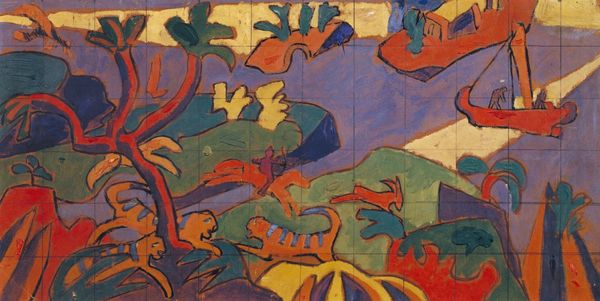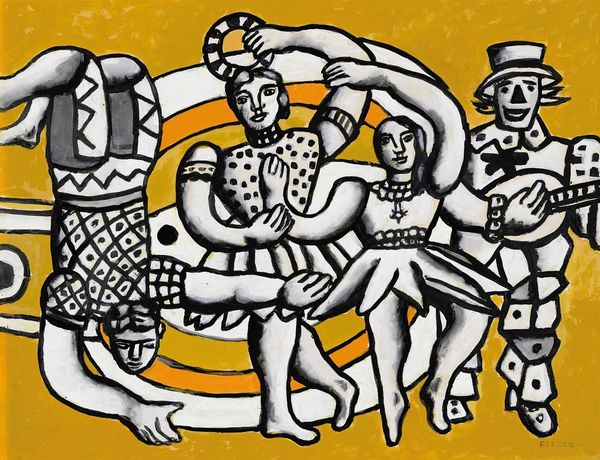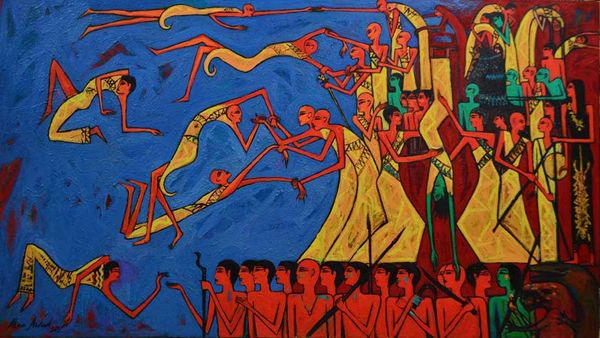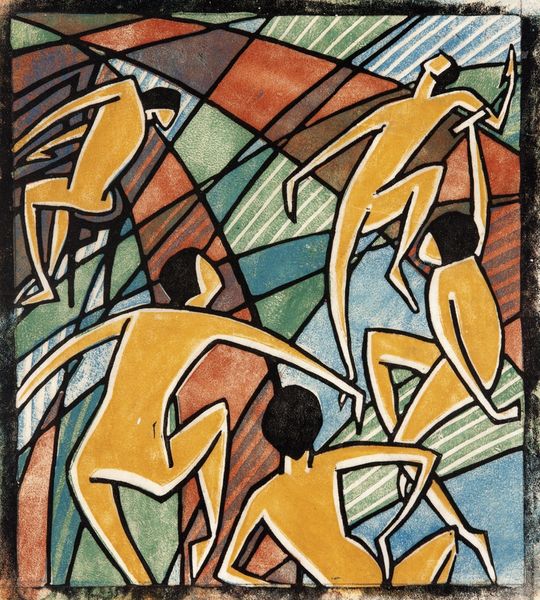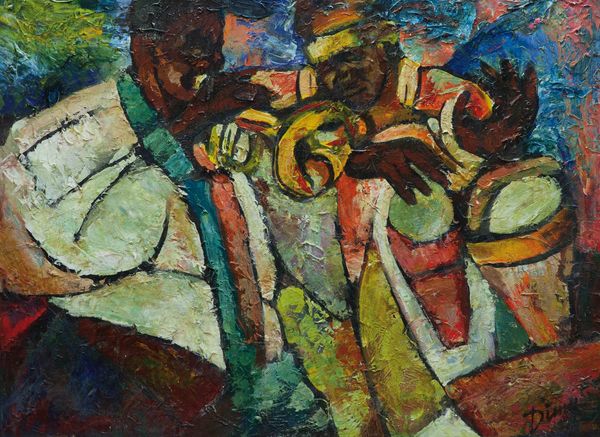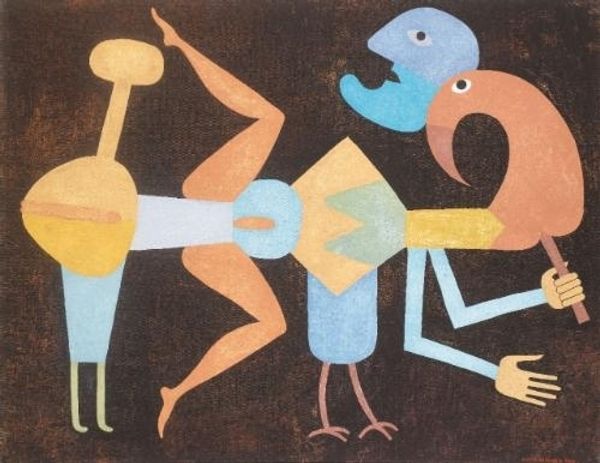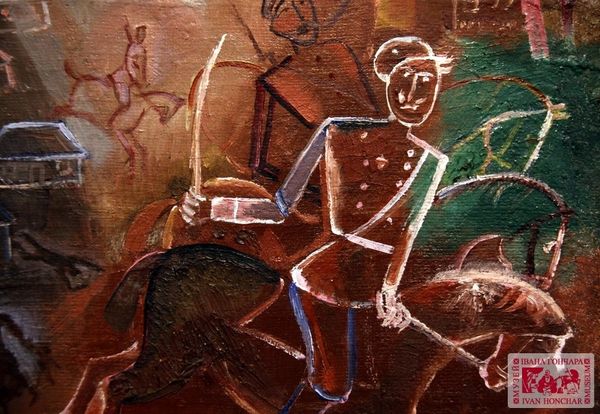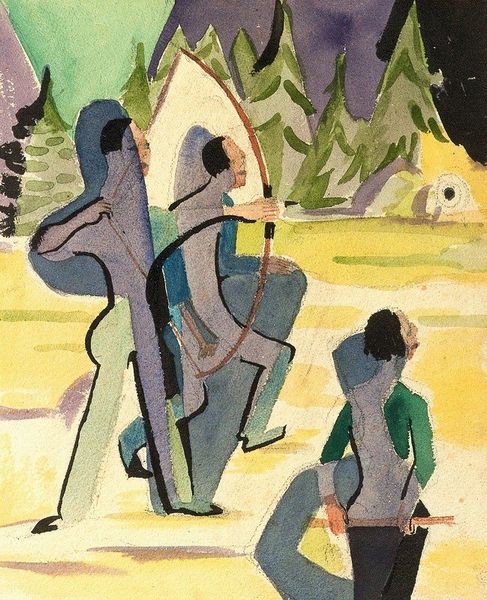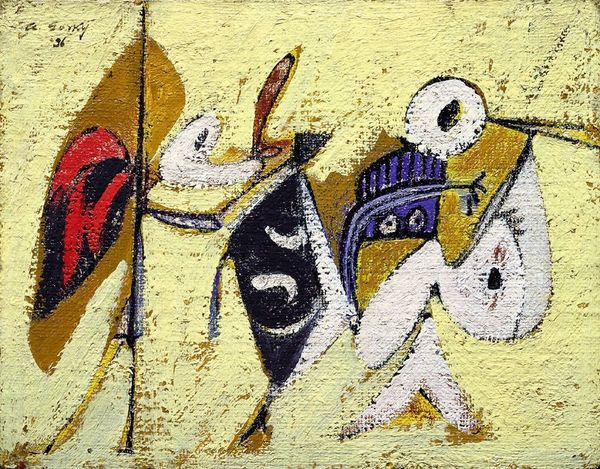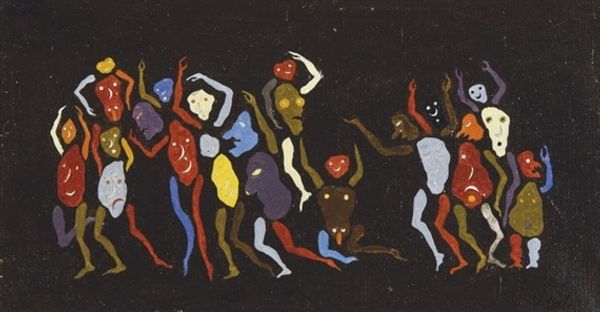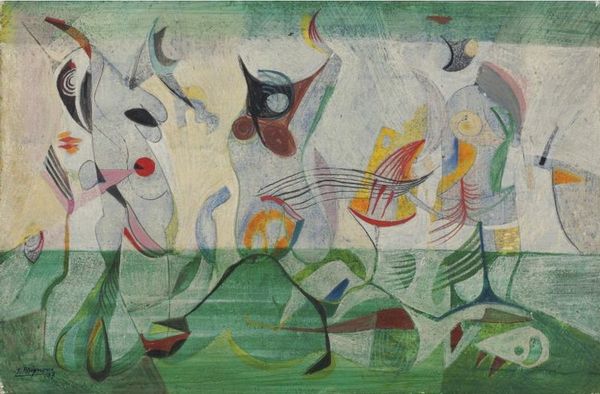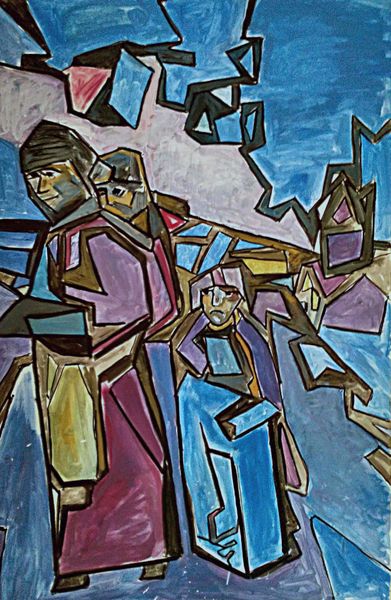
print, woodcut
#
art-deco
# print
#
landscape
#
figuration
#
geometric
#
woodcut
#
modernism
Copyright: Public domain
Curator: What a fascinating piece. This is "Wings," a woodcut print created in 1928 by the Australian artist Dorrit Black. Editor: Striking, isn't it? The geometric forms immediately grab you. The bold lines and flat planes of color are so stylized, yet they capture a sense of movement and energy. Curator: Exactly. Black studied modern art techniques in Paris, and that modernist influence is clear. You see it in the way she reduces the figures to their essential shapes. But beyond its aesthetic appeal, consider the print medium itself: the labor-intensive process of carving the woodblock and the multiple impressions it allows. This brings fine art closer to mass production. Editor: That's interesting. Looking at the composition, the dynamism is undeniable. The figures seem almost suspended between earth and sky, reinforced by the diagonals created by the limbs and birds, contrasting with the solid block of colour of what is possibly a harbour. How do you read that spatial ambiguity? Curator: Perhaps as a reflection of a society in flux, a generation caught between tradition and modernity, work and leisure. These could easily be everyday people. I’m also intrigued by Black's choice to present a coastal landscape. What narratives are constructed and imposed, and by who? Editor: I can see how one can connect those meanings to Black’s work, though I see it as less critical, and more aligned to formal artistic concerns such as the tension between figuration and abstraction. Those stark, angular figures against the somewhat softer shapes in the background play a great formal game in my view. Curator: A fascinating perspective! It highlights how deeply formalism is ingrained in our visual thinking. I like how Black challenges us to consider the connections between the aesthetic and the social. What purpose does that art really serve? Editor: Indeed. “Wings” is a reminder that artistic meaning lies at the intersection of process, form, and, perhaps even a little against the artist's primary intent, socio-economic factors. Curator: It’s an important discussion. Let’s carry it on with our next work, shall we?
Comments
No comments
Be the first to comment and join the conversation on the ultimate creative platform.
